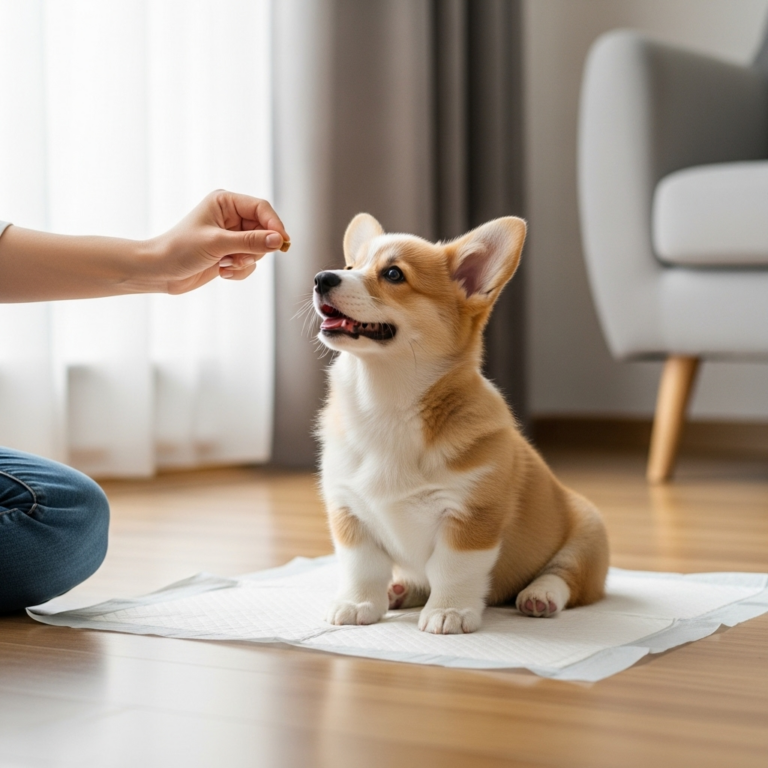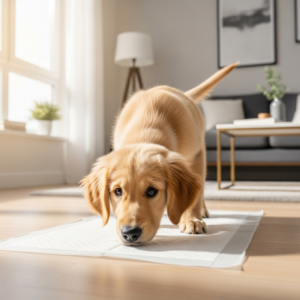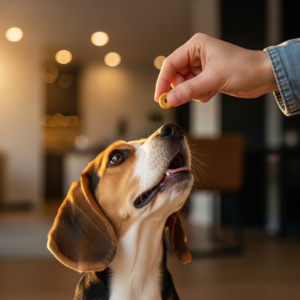How to potty train a puppy in an apartment
Bringing a new puppy into your apartment is an exciting time, but the thought of potty training without a backyard can feel daunting. Don’t worry! It’s entirely possible to successfully potty train a puppy in an apartment. With consistency, patience, and the right strategy, you can teach your new furry friend good habits from day one.
This guide will walk you through everything you need, from essential supplies to a foolproof schedule.
Contents
Before You Begin: Essential Supplies
Setting yourself up for success starts with having the right tools. Before you begin the training process, make sure you have the following:
-
Puppy Potty Pads: Essential for creating a designated indoor potty spot.
-
Enzymatic Cleaner: This is non-negotiable. Standard cleaners won’t eliminate the odor that encourages your puppy to pee in the same spot again. An enzymatic cleaner breaks down the specific proteins in urine.
-
A Crate: A crate is a vital tool. It serves as your puppy’s safe “den” and leverages their natural instinct not to soil where they sleep.
-
Leash and Harness: For frequent trips outside, even if it’s just to the hallway and down the elevator.
-
High-Value Treats: Small, tasty treats that your puppy loves. These are reserved only for successful potty breaks to create a strong positive association.
The Step-by-Step Apartment Potty Training Plan
Consistency is the most important part of this process. Follow these steps diligently.
Step 1: Choose a Designated Potty Spot
In an apartment, you have a few options. Choose ONE and stick with it to avoid confusing your puppy.
-
Indoor Option: Place puppy potty pads in a specific, easy-to-access location, like a bathroom or a corner of the laundry room.
-
Balcony Option: If you have a secure balcony, you can use a patch of artificial grass or a potty pad holder.
-
Outdoor Option: The traditional method. You must be prepared for frequent trips outside to a specific patch of grass.
Step 2: Establish a Strict and Frequent Routine
Puppies have small bladders. You need to take them to their designated potty spot frequently. A good rule of thumb is to take them out:
-
First thing in the morning.
-
Last thing before bed.
-
Immediately after waking up from a nap.
-
Within 15 minutes after eating a meal.
-
After a play session.
-
At least once every 1-2 hours initially.
Step 3: Learn Your Puppy’s Signals
Pay close attention to your puppy’s behavior. They will often give you signs they need to go. Look for:
-
Circling a specific area.
-
Sniffing the ground intently.
-
Whining or looking restless.
-
Walking towards the door or their designated potty spot.
When you see these signs, immediately take them to their spot.
Step 4: Use a Command and Positive Reinforcement
When you take your puppy to their spot, use a consistent command like “Go potty” or “Do your business.” The moment they finish, praise them enthusiastically (“Good boy! Yes!”) and give them a high-value treat immediately. This creates a powerful connection between the action and the reward.
Step 5: How to Handle Accidents (Because They Will Happen)
Never punish your puppy for an accident. Scolding them or rubbing their nose in it will only create fear and anxiety, which hinders the training process.
-
Interrupt, Don’t Scare: If you catch them in the act, make a quick, sharp noise (like a clap) to interrupt them.
-
Relocate: Immediately pick them up and take them to their designated potty spot.
-
Clean Thoroughly: This is crucial. Use your enzymatic cleaner to completely saturate the soiled area and the surrounding space. Let it sit according to the product’s instructions, then blot it dry. If you don’t eliminate the smell, they will return to that spot.
Frequently Asked Questions (FAQ)
How long does it take to potty train a puppy in an apartment?
It varies, but expect it to take several weeks to a few months for your puppy to be reliable. Patience is key.
Should I use puppy pads forever?
Puppy pads are a great tool for apartment living, but you can eventually transition your puppy to only go outside. You can do this by gradually moving the pad closer and closer to the front door, and eventually removing it altogether while increasing the frequency of outdoor trips.
My puppy keeps having accidents in their crate. What should I do?
This usually means the crate is too big. It should be just large enough for them to stand up, turn around, and lie down comfortably. If there’s extra space, they may use one corner as a bathroom. Also, ensure you are not leaving them in the crate for too long.
Final Thoughts: Patience is Your Best Tool
Remember, potty training a puppy in an apartment is a marathon, not a sprint. There will be good days and bad days. Stay consistent with your routine, use positive reinforcement, and celebrate the small victories. Your hard work will pay off with a well-behaved and happy canine companion.




